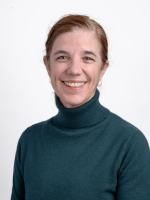A pioneering scientist who braved sawgrass, heat and muck to uncover the secrets of wetlands that provided South Florida with its watery kidneys to create a paradise of turquoise waters and emerald marshes has died.
Joan Browder died May 16, still employed as a fulltime scientist at the National Oceanic and Atmospheric Administration, where she worked for 46 years. She was 86.
READ MORE: Biscayne Bay Is In Danger Of A 'Regime Shift,' NOAA Study Finds
In her honor, colleagues and friends are urging Miami-Dade County officials to increase protections for the wetlands that Browder spent her life investigating.
“It was always the same message of Biscayne Bay, Biscayne Bay, Biscayne Bay,” said Adam Gelber, the U.S. Department of Interior director of Everglades Restoration, who met Browder in the 1990s. “It was always the same message undeterred, unchanged, never wavering, always with passion and respect.”
Gelber and others lined up last week to urge the Biscayne Bay Watershed Management Advisory Council to push for stronger protections for wetlands and coastal habitat that helped shape its unique ecosystem and protect it from hurricanes and flooding. The group warned that last year’s U.S. Supreme Court ruling weakening the Clean Water Act and narrowing the definition of wetlands puts even more pressure on disappearing wetlands.

“The last time I met with her, it was probably about a month ago. And she said, “Laura, what can I do to get this wetlands stuff done? I don't understand what's the hold up? We've been talking about it for a long time,” said Laura Reynolds, director of the Hold the Line Coalition. “And I don't I don't understand the hold up either.
Browder, a fisheries biologist and ecologist, spent her childhood in Texas and Oklahoma, where her love for nature took seed hiking the Palo Duro Canyon and its hidden caves and spiraling hoodoos, according to an obituary published in the Miami Herald. She fell in love with South Florida on a trip with her first husband, Everglades activist Joe Browder, where they settled in 1960.
After two years running a tropical plant nursery, Browder enrolled at the University of Miami, where she met marine biologist Peter Shroeder, who would become her second husband. Together, they studied the nesting patterns of woodstorks to launch a career that would include subjects as varied as periphyton and sawfish.
In 2014, she served as chief investigator after NOAA designated Biscayne Bay a special focus area amid worsening water quality. Over the years, seagrass die-offs and thickening clumps of macro algae fueled by leaky septic tanks had raised concerns that the bay had reached a tipping point. The designation was intended to funnel more research money to look for fixes, but by 2017, as seagrass continued to die across the bay, funding remained stalled. In 2019, NOAA’s Atlantic Oceanographic and Meteorological Lab, where Browder worked, published an alarming report warning that the bay was indeed undergoing a regime shift from gin clear water to a soup of algae and muddy waters.
Over the years, Browder received numerous awards, including from Audubon Florida and the Everglades Foundation, which named her a Dame of the Everglades alongside Marjory Stoneman Douglas.
In 2020, when a tiny new algae was discovered sunning itself on seagrass in Biscayne Bay, it was named Proschkinia browderiana, after Browder.
At last week advisory council meeting, Erik Stabenau, an oceanographer and chief of restoration sciences in the Everglades for the National Park Service, held up a picture showing Browder and her son as a teenager. The pair stood together in the Everglades.
“There's Joan, feet in the swamp, where she's supposed to be, where she's always been,” he said. “I was given a warning early on not to underestimate her based on her appearance. And what they said was, she may look like a kind little lady, but she is, and I quote, a force to be reckoned with. The phrase actually used was, she'll eat your lunch.”
Council members voted to recommend protections backed by speakers. However, for the matter to be considered by the county commission, Reynolds said a county commissioner must also endorse the measures and bring it to the commission.
Sign up for WLRN’s environment newsletter Field Notes to receive our insider’s guide for living in South Florida’s changing landscape. Get original reporting and recaps, with context, delivered to your inbox every Friday. Subscribe here.






